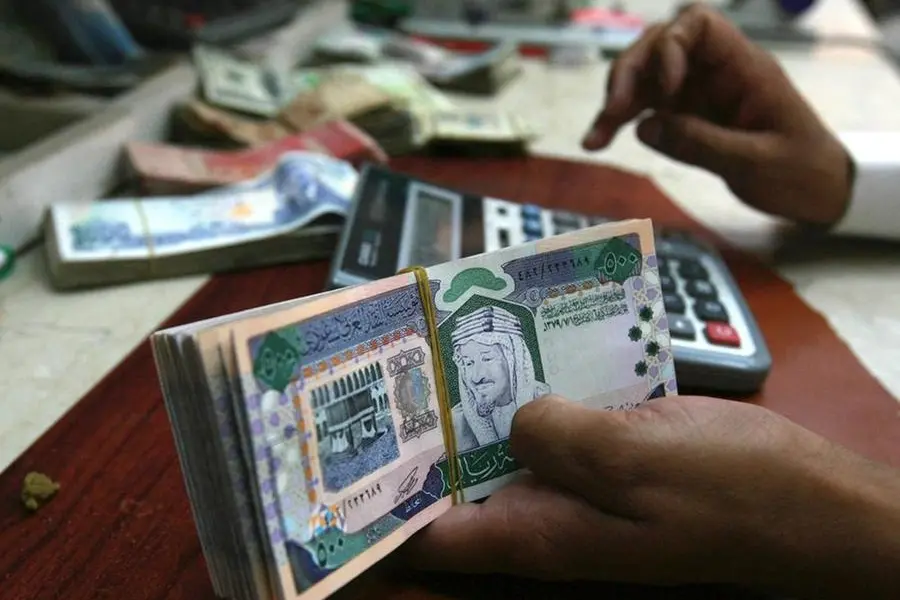PHOTO
Saudi Arabian Monetary Authority’s (SAMA) government reserve dropped by 84.2 billion Saudi riyals ($22.7 billion) in the fourth quarter of 2018, down by 14.7 percent from the previous quarter, the latest statistics from the Saudi central bank showed.
The month of December recorded the highest portion of this drop, with reserves falling by almost 71.9billion Saudi riyals from a month earlier, to reach 489.5 billion Saudi riyals at the close of the year.
“Spending commitments have been very high and the government relies on debt issues as well as dipping into reserves to meet their budget needs,” Karen Young, resident scholar at the American Enterprise Institute and lecturer at George Washington University and Johns Hopkins SAIS, told Zawya in emailed comments.
At the end of 2018, Saudi public debt reached 563 billion Saudi riyals, which is around 19.4 percent of GDP, according to a report by National Bank of Kuwait (NBK) last month. This figure is projected to increase to 22.2 percent of GDP in 2019. Yet the bank noted that the debt of Saudi Arabia is still considered low by international standards. (Read more here).
For 2019, the Saudi government has set a record budget of spending of of 1.1 trillion Saudi riyals ($293.3 billion), the highest in its history. (Read more here).
“There could also be transfers between government accounts or entities, including the PIF (Public Investment Fund),” Young noted.
“What's important is the rapid rate of drawdown of reserves since 2014. Lower oil revenues and higher spending have a very clear outcome,” she added.
Reserve halved
The government reserve has more than halved in four years to $132.2 billion at the end of 2018, from almost $358 billion at the end of 2014, according to SAMA’s annual statistics.
Cyril Widdershoven, an economics partner at Verocy, a consultancy firm advising on investment risks in the Middle East, said that the drawdown from the reserve is related to the ongoing back-up of the stock exchange in Saudi Arabia.
“The fluctuations on the stock market, especially after the Khashoggi issue, and the need to support possible future FDI in the market, as targeted during FII2018 (Future Investment Initiative), has necessitated this,” he said.
The killing of journalist Jamal Khashoggi in October in the Saudi consulate in Turkey rattled foreign investors in Saudi, and a definitive explanation for the murder has yet to emerge.
In the week ending Oct 18, 2018, the Saudi stock exchange recorded one of the biggest selloffs since it opened to foreign direct investment in 2015, as foreigners sold a net 4.01 billion riyals ($1.07 billion) in Saudi stocks, but the stock exchange data showed that Saudi institutions bought a net 7.8 billion riyals worth of stocks, according to Reuters.
“The outflow of foreign investments was too high not to react,” Widdershoven said. “And stability on stock market is needed for MSCI listing in 2019, for renewed targeting of state bond issues partly to support investments of PIF, and last but not least, the still targeted Aramco (Downstream) IPO, now planned for 2021,” he said.
“Possible reserves could be used to support ongoing major investments by Saudi government and parties outside of the country, especially linked to Russia and possibly Asia,” he added.
Nevertheless, during times of global economic uncertainty and oil price fluctuations, there is a need to preserve the government’s financial reserve and to identify new channels of investment spending, according to Salim Al Zamam, founder of ‘SaudiScope’, a consultancy specialising in Gulf economies.
Speaking about alternative channels of funding that the government can tap, Al Zammam notes that “for infrastructure projects with a foreign partner, for instance, a large proportion of the investment can be financed by international development funds from the investor’s country, often called EXIM banks,” he said.
“National companies can also finance their investments through their private bonds and instruments,” he told Zawya in comments emailed in Arabic.
“The BOT (build–operate–transfer) system is also one of the best options for such projects implemented by the private sector, instead of allocating state budgets for it,” he added.
The International Monetary Fund (IMF) last month cut the growth outlook for the world economy for 2019 to 3.5 percent, with the U.S.-China trade tensions risk destabilising a slowing global economy. The fund also cut the growth outlook for the Middle East, North Africa, Afghanistan and Pakistan region to 2.4 percent, with weak oil output growth expected to weigh on the region as producers adhere to cuts agreed at a meeting in Vienna in December.
(Reporting by Nada Al Rifa; Editing by Michael Fahy)
Our Standards: The Thomson Reuters Trust Principles
Disclaimer: This article is provided for informational purposes only. The content does not provide tax, legal or investment advice or opinion regarding the suitability, value or profitability of any particular security, portfolio or investment strategy. Read our full disclaimer policy here
© ZAWYA 2019












